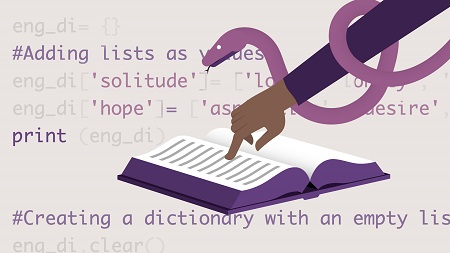
English | MP4 | AVC 1280×720 | AAC 44KHz 2ch | 0h 57m | 142 MB
Dictionaries are a common data structure in Python programming, designed to hold a sequence of key-value pairs. Dictionaries are dynamic, can be nested, and are preferable to lists in situations where you would want to search for and retrieve data with the same key. Being able to use dictionaries effectively is critical to mastering Python and create more efficient code. In this course, Deepa Muralidhar reviews the syntax and real-world use cases for dictionaries. Discover how to create a simple dictionary, iterate through the data, incorporate operations and comparators, and compare dictionaries to other common data structures such as lists, sets, and tuples. Plus, find out how to use dictionary comprehension to automate dictionary generation by merging lists or arrays.
Topics include:
- Creating a dictionary
- Iterating through a dictionary
- Using operations and comparators
- Working with lists
- Comparing dictionaries to other data structures
- Using dictionary comprehension
Table of Contents
Introduction
1 Python dictionaries and why you should use them
2 What you should know
Basic Concept and Syntax of Python Dictionary
3 What is a dictionary in Python
4 Creating a dictionary
5 Iterating through a dictionary
6 Challenge
7 Solution
Operators and Methods
8 Basic Python dictionary operations and comparators
9 Python dictionary methods
10 Using Python lists within a dictionary
11 Challenge
12 Solution
Compare Dictionaries with Other Data Structures
13 Dictionary vs. lists
14 Dictionary vs. sets and tuples
15 Implementation of dictionaries as hash tables in Python
16 Quiz introduction
Dictionary Comprehension
17 Understanding comprehension
18 Understanding dictionary comprehension with an example
19 Challenge
20 Solution
Conclusion
21 Next steps for Python dictionaries
Resolve the captcha to access the links!